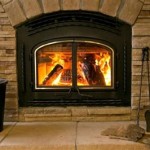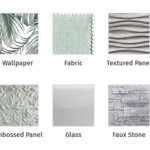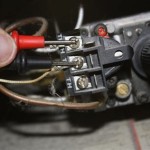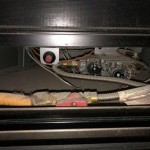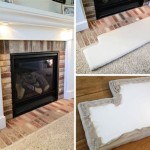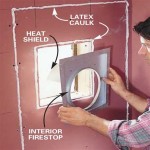Corner Fireplace Mantel Design Ideas
Corner fireplaces present a unique design challenge and opportunity in interior spaces. Unlike traditional fireplaces centered on a wall, corner fireplaces often require a mantel design that complements the angled placement and enhances the overall aesthetic. The mantel serves as a focal point, providing a surface for decorative items and tying the fireplace into the existing decor. Selecting the appropriate mantel design can significantly impact the room's style, from traditional to modern, rustic to minimalist.
Consideration should be given to factors such as the room's size, style, and the fireplace's existing features. The mantel should not only be visually appealing but also functional and proportionate to the fireplace and the surrounding space. Material choices, color palettes, and decorative elements all contribute to the overall impact of the corner fireplace mantel design.
Optimizing Space with Corner Mantels
One of the primary benefits of a corner fireplace is its space-saving potential. However, this also necessitates a mantel design that efficiently utilizes the available space. A floating mantel, for instance, can provide a minimalist look while maximizing the visual openness of the corner. This design is particularly suitable for smaller rooms where a bulky mantel could overwhelm the space.
Alternatively, a custom-built corner mantel can be designed to integrate seamlessly with the existing architectural features. This approach allows for tailored storage solutions, such as built-in shelves or cabinets, flanking the fireplace. These additions can provide practical storage space while maintaining a cohesive and aesthetically pleasing design.
Another space-optimizing strategy involves incorporating a vertical design element into the mantel. Extending the mantel upwards, either through decorative panels or a custom-built surround, can draw the eye upward, creating a sense of height and spaciousness. This is particularly effective in rooms with lower ceilings.
Careful consideration should be given to the placement of decorative items on the mantel. Opting for fewer, larger pieces, rather than numerous small items, can create a cleaner and more organized look. This helps to prevent the corner fireplace from feeling cluttered or cramped.
Maintaining a balance between functionality and aesthetics is crucial when designing a corner mantel. The goal is to create a visually appealing focal point that also serves a practical purpose, whether it's providing storage or enhancing the overall ambiance of the room.
Material Selection and Aesthetic Considerations
The choice of materials plays a significant role in determining the overall aesthetic of the corner fireplace mantel. Wood, stone, brick, and metal are common choices, each offering a distinct look and feel. The material should complement the existing decor and reflect the desired style of the room.
Wood mantels offer a classic and versatile option, suitable for a wide range of styles. A rustic wood mantel, with its natural grain and imperfections, can add warmth and character to a room. In contrast, a painted wood mantel can provide a more contemporary and refined look. The type of wood used, such as oak, maple, or pine, can also influence the overall aesthetic.
Stone mantels exude a sense of timeless elegance and durability. Natural stone, such as granite or marble, can create a sophisticated and luxurious look. Faux stone options provide a more budget-friendly alternative while still offering a similar aesthetic appeal. The texture and color of the stone should be carefully selected to complement the surrounding decor.
Brick mantels offer a more industrial and rustic aesthetic. Exposed brick can add character and warmth to a room, particularly in older homes. Painted brick can provide a more contemporary and clean look. The brick can be incorporated as part of the overall fireplace surround or used solely for the mantel itself.
Metal mantels offer a sleek and modern aesthetic. Stainless steel, wrought iron, and other metals can be used to create a contemporary and minimalist look. Metal mantels are often paired with other materials, such as wood or stone, to create a more balanced and visually appealing design. The finish of the metal, such as brushed or polished, can also influence the overall aesthetic.
Beyond the primary material, consider incorporating accent materials to add visual interest and depth. For example, adding a reclaimed wood beam above a stone mantel can create a rustic yet elegant contrast. Similarly, incorporating metal accents into a wood mantel can add a touch of contemporary flair.
Integrating the Mantel with the Room's Design
A successful corner fireplace mantel design is one that seamlessly integrates with the overall design of the room. This involves considering the existing color palette, furniture arrangement, and architectural features. The mantel should not only be aesthetically pleasing on its own but also contribute to the overall harmony of the space.
When selecting a color palette for the mantel, consider the existing colors in the room. A neutral color, such as white or gray, can provide a versatile backdrop for decorative items and allow the fireplace to blend seamlessly with the surrounding decor. Alternatively, a bolder color can be used to create a focal point and add visual interest to the room. The color should complement the other colors in the room and reflect the desired style.
The furniture arrangement should be carefully considered to ensure that the corner fireplace remains the focal point of the room. Arranging seating around the fireplace can create a cozy and inviting atmosphere. The furniture should be positioned to allow for unobstructed views of the fireplace and mantel. Avoid placing large pieces of furniture directly in front of the fireplace, as this can block the view and make the room feel cramped.
The architectural features of the room should also be taken into account when designing the corner fireplace mantel. If the room has existing architectural details, such as crown molding or wainscoting, the mantel should complement these features. This can be achieved by using similar materials, colors, and styles. If the room lacks architectural details, the mantel can be used to add visual interest and character.
Lighting plays a crucial role in highlighting the corner fireplace and mantel. Recessed lighting, sconces, or strategically placed lamps can be used to illuminate the mantel and create a warm and inviting atmosphere. The lighting should be positioned to accentuate the decorative items on the mantel and highlight the texture and color of the materials used.
Ultimately, the goal is to create a corner fireplace mantel design that is both visually appealing and functional, seamlessly integrating with the overall design of the room and enhancing the ambiance of the space. Careful planning and attention to detail are essential to achieving this goal.

How To Decorate A Corner Fireplace Mantel For The Holidays Making It In Mountains

Corner Mantle Fireplace Decor Fall Home

How To Transform A Corner Fireplace Thrifty Decor Diy And Organizing

32 Best Corner Fireplace Ideas For 2024 Decor Home Gas Living Room With
:max_bytes(150000):strip_icc()/Snapinsta.app_330833096_211211108122954_2927897200506377169_n_1080-7221696cd57e430b88e85a3893a6320c.jpg?strip=all)
25 Corner Fireplace Ideas To Make A Cozy Statement

Fall Corner Fireplace Decor Ideas Electric Gas Corne Makeover Mantle

Working With A Corner Fireplace Emily Clark

How To Decorate A Corner Fireplace Thrifty Decor Diy And Organizing

How To Make A Corner Fireplace Mantel Look Good 15 Examples

Corner Fireplace Ideas Tags Diy Modern Home Design
Related Posts

